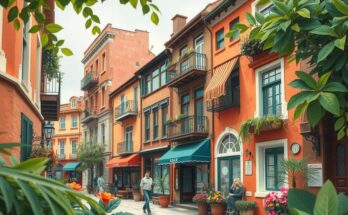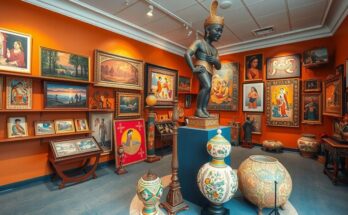In Bắc Giang, where 14.26% of the population comprises ethnic minorities against a backdrop of lush mountains, the preservation of cultural identity is gaining momentum. The dominant districts of Sơn Động, Lục Ngạn, Lục Nam, and Yên Thế hold a treasure trove of traditional values closely intertwined with local life. Recent initiatives from provincial authorities aim to champion these cultures through strategic resources dedicated to promoting and preserving traditional festivals and practices.
Sơn Động District stands at the heart of this cultural mosaic, particularly in Tuấn Sơn village, home to the Dao Lô Gang ethnic community. The women here have meticulously preserved their hand embroidery traditions, a craft that has become emblematic of their cultural identity. Local resident Đặng Thị Xuân reflects this commitment, expressing her desire to pass down these intricate techniques to future generations while creating vibrant Dao clothing for festivals.
Originally resettled in 2005, Tuấn Sơn Village comprises about 300 Dao residents who have thrived despite economic challenges, thanks to government support in infrastructure and agriculture. The community’s collective spirit has enabled improvements and a decreasing poverty rate, marking a resurgence in cultural and economic vitality, showing how tradition can coexist with development.
The preservation of traditional culture remains integral, as Dao women continue to pass down skills in embroidery alongside their vibrant heritage. This dedication not only enhances the quality of their crafts but also promotes the DAO culture’s rich tapestry. As La Thị Mỹ, head of the Women’s Union, notes, the renewal of Dao tourism hinges upon the revival of language and traditional skills.
Ethnic diversity in Sơn Động District, including 12.5% Dao members, highlights the area’s rich cultural traits. Triệu Thị Bình, another community leader, actively participates in cultural clubs and embraces her heritage by teaching both the Dao script and traditional practices. Her passion signifies a growing commitment among the Dao to safeguard their unique identity.
Gà Village, composed of 210 households, boasts a multitude of villagers skilled in traditional crafts and music. Initiatives led by local women’s associations aim to inspire youth participation in cultural activities, ensuring that the legacy of the Dao community thrives across generations. This grassroots movement helps maintain their ethnic uniqueness while fostering community pride.
Local officials, such as Lê Hồng Sơn, emphasise the importance of preserving Dao arts and traditions through community involvement. Such initiatives promote not only cultural heritage but also empower women, who play a pivotal role in upholding their community’s identity. This engagement continues to enrich the cultural landscape of Sơn Động.
Nguyễn Văn Thức affirms the community’s growing resolve to preserve their heritage, reminding us of the vital role that cultural education plays in shaping identity. With government support, village leaders are devoted to nurturing the next generation in traditional arts and folklore, underscoring the importance of this cultural legacy.
The Sơn Động District’s recent 26th Party Congress resolution highlights the ongoing efforts to preserve ethnic heritage, identifying it as a crucial, enduring task. Funding for cultural infrastructure, traditional arts clubs, and the promotion of intangible cultural heritage have become cornerstones of the district’s strategy since their term started.
In 2023, the district allocated substantial funds to bolster socio-economic development for ethnic minorities, enhancing community tourism through potential eco-tourism sites. Festivals, rich with cultural significance, illuminate the area’s heritage, offering both locals and visitors a deeper connection with the vibrant tapestry of Sơn Động’s traditions.
Efforts to elevate local festivals and cultural performances—like the Tắc xình dance and Then singing—will integrate tourism with the region’s potential. Tống Thị Hương Giang expresses excitement over the district’s plans to showcase local heritage, inviting visitors to immerse themselves in the region’s rich history and culture, bridging past and present.
Bắc Giang prioritises the preservation of ethnic minority cultures, particularly in districts like Sơn Động, where the Dao community upholds traditional practices like embroidery. Government support has bolstered economic growth while maintaining cultural heritage through festivals and community initiatives, promoting local traditions and tourism. The district aims to enhance its cultural landscape, ensuring the vibrancy of its ethnic identities for future generations.
Bắc Giang is deeply committed to preserving the cultural identities of its ethnic minorities, with community-driven initiatives and robust government support marking a pathway toward cultural revitalisation and economic prosperity. The collective efforts of villages, notably in Sơn Động District, reflect a vibrant tapestry of heritage actively passed down through generations. This cultural resilience not only strengthens community bonds but also serves as a beacon for sustainable development, making the region a captivating destination for cultural tourism.
Original Source: vietnamnews.vn



